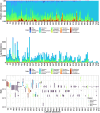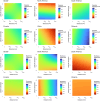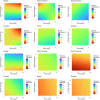Global arthropod beta-diversity is spatially and temporally structured by latitude
- PMID: 38720028
- PMCID: PMC11078949
- DOI: 10.1038/s42003-024-06199-1
Global arthropod beta-diversity is spatially and temporally structured by latitude
Abstract
Global biodiversity gradients are generally expected to reflect greater species replacement closer to the equator. However, empirical validation of global biodiversity gradients largely relies on vertebrates, plants, and other less diverse taxa. Here we assess the temporal and spatial dynamics of global arthropod biodiversity dynamics using a beta-diversity framework. Sampling includes 129 sampling sites whereby malaise traps are deployed to monitor temporal changes in arthropod communities. Overall, we encountered more than 150,000 unique barcode index numbers (BINs) (i.e. species proxies). We assess between site differences in community diversity using beta-diversity and the partitioned components of species replacement and richness difference. Global total beta-diversity (dissimilarity) increases with decreasing latitude, greater spatial distance and greater temporal distance. Species replacement and richness difference patterns vary across biogeographic regions. Our findings support long-standing, general expectations of global biodiversity patterns. However, we also show that the underlying processes driving patterns may be regionally linked.
© 2024. The Author(s).
Conflict of interest statement
The authors declare no competing interests.
Figures




References
-
- IUCN. The IUCN Red List of Threatened Species, https://www.iucnredlist.org (2022).
-
- García‐Robledo C, et al. The Erwin equation of biodiversity: From little steps to quantum leaps in the discovery of tropical insect diversity. Biotropica. 2020;52:590–597. doi: 10.1111/btp.12811. - DOI

